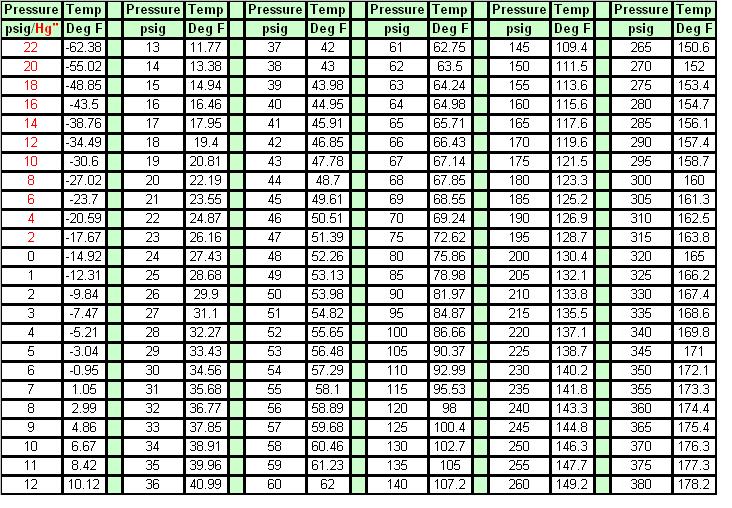Rank: Member
Groups: Registered
Joined: 5/28/2016(UTC)
Posts: 4
|
Fridge stopped cooling over the weekend. Had this problem once before and had to pay 160 bucks for a top off. Figured it was the same problem (small leak) and decided to buy gauges and 134a myself since the piercing valve was already installed.
It was reading -1 PSI running so I charged it to 5 psi running. Cooled but frost line ran back to compressor and partway down the side. That to me indicated overcharge. so I unplugged, let pressure build in gauge 10-20 psi bled some out, plugged back in and repeated the process checking the frost line. Did this 5-6 times. Got a little impatient and bled out a lot but running I'm at 2-3 psi but frost line on evap coil is almost to the top (I'd say one row of pipe shy of totally covered). Also saw some frost on line running out of freezer back to compressor, just outside the box). Fridge is cooling (have to check with a thermometer that I didn't have last night), but every time I go by fridge it's running. Concerned that I may have bled out too much.
I put some 134a back in but I don't want to go around in circles if I should be doing something else.
Suggestions?
Does frost line not to top of evap coil mean not enough 134a? Seems like (could just be me), it was blowing colder when I had it overcharged but not sure.
---edit---
I measured the freezer at -5f and the fridge at 36f. Seems like the fridge never stops running. No frost on the return line. Minimal frost on the evap coil.
Concerned about the running all the time. Ideas?
Roveer
|
|
|
|
|
|
Rank: Member
Groups: Registered
Joined: 2/2/2017(UTC)
Posts: 422
|
Sorry about this long post but there is a lot to say here and I tend to over explain so the curious or more technically minded can understand :D : I think you're going to be chasing your tail on this for some time. It is impossible to charge small sealed systems accurately by pressure. You're dealing with fractions of an ounce that you can't detect making a difference in performance. You may eventually make it to a working state by trial and error but you'll be messing with this for weeks to be certain you've got it. When you add/remove coolant you'll have to let it run for a while before the pressures are even accurately reflecting what is happening. Here's the theory behind it. Pressures on the low side can only tell you temp of the refrigerant gas present in the evap at that moment, there is no indication of amount what so ever... If even a small amount of liquid is making it to the evap where it can change to gas you'll see pressure directly corresponding to the temperature of the evap. So it may say 1-2lbs on the gauge when the evap is -10deg but still only have 2.5 oz in the system. Or maybe 7oz. You just can't tell from pressure. The charge amount should be on the model serial tag. It'll be a weight in ounces; probably around 5oz. This is commonly called the critical charge for obvious reasons. If you've already bought a tank of R-134a (and I really hope you bought virgin r-134a, not an A/C repair kit) you'd just need to buy an accurate scale. However ideally the system would be recovered and evacuated still to ensure no moisture is present and get an accurate charge. I have to mention that without proper recovery, repair, and evacuation you're allowing unknown amounts of contaminants into the system any time you connect to that valve or the evap goes into vacuum. This is bad news for longevity. I assume there is a temporary tap on the low side or process tube at the compressor? Push that valve slightly with your finger and if the oil/gas escaping smells horrible you're wasting your time; it's irreversibly contaminated and the compressor is likely to be already damaged. Here is useful temp/pressure chart. Temp and pressure of R-134a are always related at these numbers: 
|
|
|
|
|
|
Forum Jump
You can post new topics in this forum.
You can reply to topics in this forum.
You can delete your posts in this forum.
You can edit your posts in this forum.
You cannot create polls in this forum.
You can vote in polls in this forum.
Important Information:
The AppliancePartsPros.com uses cookies. By continuing to browse this site, you are agreeing to our use of cookies.
More Details
Close